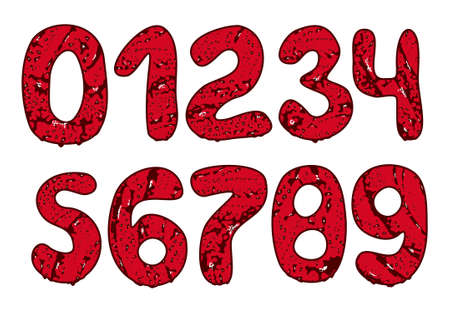Origins of Rune Stones in Ancient Scandinavia
The fascinating journey of rune stones begins in the heartlands of ancient Scandinavia, where these enigmatic monuments first emerged around the late Iron Age, roughly between the 3rd and 12th centuries AD. Crafted from local stone and inscribed with mysterious runic alphabets, rune stones served as more than mere markers or gravestones—they were both messages and memorials, deeply woven into the fabric of Norse society. The runes themselves, known collectively as the Futhark, are believed to have evolved from earlier Italic or Germanic scripts, embodying a unique linguistic tradition that was at once practical and magical. These early rune stones often commemorated notable individuals or significant events, but their role extended beyond remembrance; they were touchstones for community identity and markers of territorial claims. In a world defined by oral tradition and shifting allegiances, the permanence of stone offered an enduring voice. As we explore their origins, we see how rune stones acted as cultural signposts—anchoring stories, beliefs, and languages in a landscape shaped by myth and memory.
2. The Migration of Runes: How Norse Culture Crossed the North Sea
When we think of runes, windswept Scandinavian landscapes and Viking longships often come to mind. However, the story of rune stones stretches far beyond these Nordic origins. During the early medieval period—roughly between the 8th and 11th centuries—the Norse peoples embarked on a series of migrations and raids that brought their language, customs, and distinctive rune carving traditions across the North Sea to the British Isles.
Tracing Norse Movements: From Scandinavia to Britain
The movement of Norse culture was not a single event, but rather a complex process involving traders, settlers, raiders, and mercenaries. These groups landed on British shores, particularly in regions like Yorkshire, Orkney, Shetland, and the Isle of Man. Over time, they established settlements and interacted with local populations, leaving behind clear archaeological and linguistic traces.
Archaeological Evidence: Rune Stones in Britain
One of the most tangible forms of evidence for Norse influence is the presence of rune stones found in Britain. While not as numerous as those in Sweden or Denmark, several significant examples have been unearthed. These stones bear inscriptions in Old Norse or Anglo-Scandinavian runic scripts and are often associated with burial sites or places of assembly (thing-sites).
| Location | Date | Description |
|---|---|---|
| Kirk Michael (Isle of Man) | 10th century | Features a mix of Norse mythology and Christian iconography, inscribed in runes. |
| St. Pauls Churchyard (London) | Early 11th century | A fragmentary stone with runic text referencing Scandinavian names. |
| Ruthwell Cross (Dumfriesshire) | 8th–9th century | An Anglo-Saxon monument with both Latin and runic inscriptions. |
Narratives from Chronicles and Sagas
Beyond material artefacts, historical narratives also shed light on the migration of runes to Britain. The Anglo-Saxon Chronicle records waves of Norse incursions, while Icelandic sagas recount voyages to England and Scotland. These written sources underscore the cultural exchange that occurred—a fusion reflected in language (Old Norse loanwords remain embedded in modern English dialects) and art forms like rune carving.
The crossing of the North Sea thus marks not just a physical journey but also an intellectual and artistic migration—one that helped shape Britains medieval landscape. The legacy of these movements can still be glimpsed today, etched into ancient stones scattered across the British countryside.

3. Rune Stones in Early Britain: Myth and Material
While rune stones are most famously associated with Scandinavia, early British history holds a curious relationship with these enigmatic artefacts. The presence of rune stones on British soil is both a matter of archaeological record and the stuff of legend, blurring the boundaries between tangible evidence and mythic storytelling.
The Arrival of Runes: Cultural Exchanges
Runic inscriptions began to appear in Britain during the early medieval period, particularly after Norse settlements expanded into regions such as the Danelaw, Orkney, and Shetland. These stones served not just as memorials or territorial markers but also as symbols of cultural blending. The integration of runes into local customs demonstrates how Scandinavian settlers influenced British society, language, and spiritual practices.
Folklore and Local Legends
British folklore abounds with tales of mysterious standing stones inscribed with cryptic marks, often believed to be magical or cursed. In many rural communities, these ancient stones were woven into stories involving giants, witches, and forgotten kings. While some rune stones have been identified and studied by archaeologists—such as the famous Ruthwell Cross in Scotland—others remain shrouded in local myth, their origins hotly debated by historians and storytellers alike.
Material Discoveries: Evidence from the Earth
Material finds confirm that genuine rune stones do exist in Britain, though they are relatively rare compared to those found in Scandinavia. Notable examples include the aforementioned Ruthwell Cross and several stones discovered in Yorkshire and the Isle of Man. Each stone offers a fragmentary glimpse into a time when Norse influence was at its peak, acting as silent witnesses to centuries of migration, conquest, and cultural exchange.
The story of rune stones in early Britain is therefore one of intersections—where myth meets materiality, and where foreign scripts became embedded in the fabric of local life. This interplay continues to spark fascination among scholars and laypeople alike, inviting us to question what we know about our own landscape’s hidden histories.
4. Revival and Reimagining: Victorian Fascination with Runes
The Victorian era in Britain was a period of restless curiosity and unapologetic eclecticism, especially among scholars, antiquarians, and the social elite. Amidst the Gothic Revival and a blossoming interest in all things mystical, runic scripts—once confined to the windswept stones of Scandinavia—found an unlikely resurgence on British soil. But this was no mere academic pursuit. Rather, the Victorians reimagined runes through the lens of their own cultural anxieties and aspirations, intertwining them with notions of national identity, romantic mystique, and even spiritualism.
Victorian intellectuals such as William Morris and George Stephens led the charge, poring over ancient inscriptions and publishing influential works on runology. Their fascination wasn’t purely historical; it was imbued with a sense of wonder at the perceived wisdom and enigma of the ancient North. Literary societies staged public lectures, while private collectors scoured the continent for rune-inscribed artefacts to display in stately homes or museums. The result? A cross-cultural infusion where Norse motifs began to pepper British art, literature, and even architecture.
| Victorian Figure | Contribution | Impact on British Culture |
|---|---|---|
| William Morris | Translated sagas & incorporated runic imagery in design | Popularised Nordic aesthetics in decorative arts |
| George Stephens | Pioneered scholarly research on runestones in Britain | Brought legitimacy to runology as an academic discipline |
| Eleanor Hull | Wrote accessible texts on Celtic & Norse heritage | Sparked public interest in medieval symbolism |
This fervour for all things runic also dovetailed neatly with broader Victorian preoccupations—especially the search for spiritual meaning beyond conventional Christianity. Some esoteric societies began experimenting with rune casting as a form of divination, blending Nordic symbols with homegrown folklore. Meanwhile, poets and novelists wove references to runes into their works, using them as shorthand for hidden knowledge or ancestral power.
What emerges from this period is a distinctly British reinterpretation of Scandinavian heritage—a creative act that blurred the lines between scholarship, fantasy, and national myth-making. By grafting these enigmatic symbols onto their own evolving sense of history, Victorians both preserved and transformed the legacy of rune stones, ensuring their place within Britain’s rich tapestry of cultural memory.
5. Modern Interpretations: Rune Stones in Contemporary British Culture
In recent decades, rune stones have experienced a fascinating revival across Britain, transcending their Scandinavian origins to become symbols woven into the fabric of contemporary culture. This modern engagement with runes is not a mere nod to ancient history—it’s a living dialogue between past and present, where artistry, literature, and alternative spiritualities converge.
The Artistic Renaissance of Runes
British artists have long been captivated by the enigmatic beauty of runic inscriptions. Today, you’ll find rune-inspired motifs in everything from jewellery crafted in London’s creative quarters to striking public sculptures dotting cityscapes. These works often fuse traditional Norse designs with distinctly British sensibilities—think Celtic knots intertwined with runic scripts—resulting in pieces that celebrate both heritage and innovation. The subtle presence of runes in visual art signals a growing appreciation for their aesthetic and symbolic power, inviting viewers to contemplate connections between ancient myth and modern identity.
Runes in British Literature and Popular Media
The allure of rune stones has also seeped into British literature and pop culture. Authors like J.R.R. Tolkien famously incorporated runic alphabets into his Middle-earth sagas, drawing direct inspiration from Anglo-Saxon and Norse sources. Today’s novelists and screenwriters continue this tradition, using runes as plot devices or mystical artefacts in fantasy and historical fiction alike. Even mainstream television—think detective dramas set against windswept moors—sometimes employs rune stones to evoke an atmosphere of arcane mystery or ancestral memory, reflecting Britain’s enduring fascination with its own layered past.
The Esoteric Revival: Runes as Tools of Self-Discovery
Beyond mainstream culture, rune stones have found new resonance among Britain’s esoteric communities. Modern pagans, occultists, and practitioners of Heathenry use runes as instruments for divination, meditation, and personal empowerment. Workshops on “runic wisdom” flourish at alternative festivals from Glastonbury to the Scottish Highlands, where participants explore ancient symbolism as a means to navigate contemporary life. In these spaces, rune stones are not relics but living tools—bridges between collective memory and individual transformation.
Blending Ancient Roots with Modern Identity
This multifaceted resurgence reflects more than nostalgia; it speaks to a uniquely British way of embracing old traditions while crafting new meanings. Whether encountered in galleries, novels, or spiritual circles, rune stones in modern Britain embody a cross-cultural conversation—a testament to how ancient Scandinavian legacies can be reimagined within the rhythms of twenty-first-century life.
6. Runes in the British Landscape: Sites to Visit Today
If you’re keen to witness the enduring legacy of rune stones beyond textbooks and museum glass, Britain offers a surprising array of sites where runic inscriptions and motifs can be experienced in situ. These locations, scattered across the country, not only showcase remnants of Viking and early medieval presence but also invite reflection on how ancient symbols continue to shape our cultural imagination.
Jorvik Viking Centre, York
Arguably Britain’s most immersive Norse heritage experience, the Jorvik Viking Centre in York boasts both reconstructed rune stones and artefacts bearing authentic runic inscriptions unearthed in the city’s Coppergate excavations. Visitors can explore replicas alongside genuine finds, linking the history of Scandinavian settlers directly with modern-day Yorkshire.
The Maeshowe Chambered Cairn, Orkney
This Neolithic burial mound is celebrated for its enigmatic runic graffiti left by 12th-century Norse crusaders. The inscriptions range from poetic verses to cryptic messages, making Maeshowe one of Western Europe’s richest collections of Viking runes outside Scandinavia. Guided tours delve into their stories and wider significance within Orkney’s layered history.
St. Paul’s Church, Gosforth, Cumbria
The striking Gosforth Cross in the churchyard is one of Britain’s most important Anglo-Scandinavian monuments. Adorned with intertwined Christian and Norse iconography, it features runic-style carvings that reflect a unique cultural fusion during the Danelaw period. The cross stands as a testament to how runes mediated between pagan and Christian traditions on British soil.
Lindisfarne Priory, Northumberland
While famed for its early Christian heritage, Lindisfarne’s archaeological finds include fragments with runic markings. These echo the island’s turbulent past as both a target and stronghold during the Viking age—an evocative stop for anyone exploring the spiritual and martial crossroads of British history.
The British Museum, London
For those unable to travel north, the British Museum houses an impressive selection of runic artefacts from across Britain and beyond. From personal amulets to monumental stones, each object is accompanied by expert interpretation, connecting visitors with broader European narratives while grounding them in British contexts.
Connecting Past and Present
Whether you’re tracing Viking footsteps through windswept landscapes or examining a centuries-old inscription under glass, these sites highlight how runes are more than relics—they are living witnesses to Britain’s entangled histories with Scandinavia. By visiting these locations, you engage not just with ancient scripts but with ongoing conversations about identity, migration, and cultural exchange that resonate as strongly today as they did over a millennium ago.


